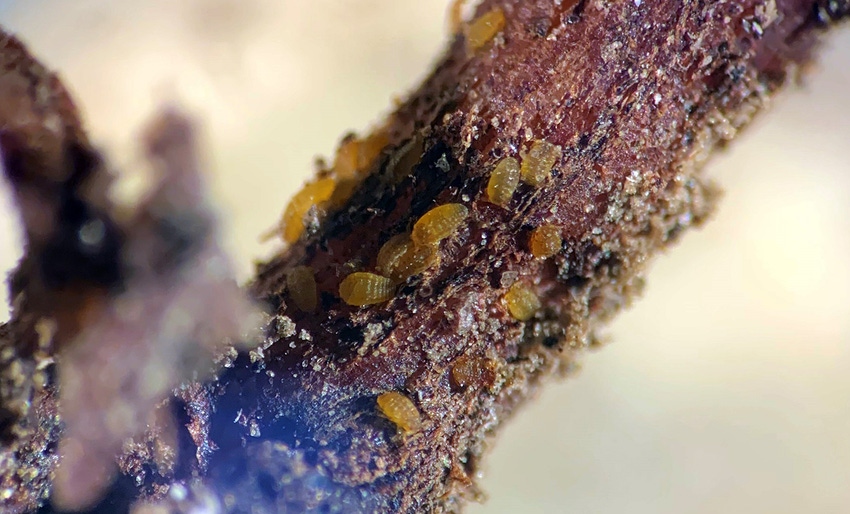
California has company in the fight against phylloxera.
Although New World varietals had developed immunity due to years of exposure, when vintners began exchanging cuttings with Europe, that resistance ended and by the late 1980s, a new type of phylloxera began attacking rootstocks in California’s Wine Country, stunting growth, withering leaves, shriveling grapes, and rotting roots.
It now appears that grape phylloxera, tiny aphidlike insects, are on the move.
As if Pierce’s Disease, grapevine red blotch disease, and glassy-winged sharpshooters on the West Coast weren’t enough to make grape growers cringe, news of the appearance of phylloxera is now driving Washington wine workers nuts.
And that distraction is not welcome in a state where wine growing acreage is trending upward. USDA says Washington is home to a $5 billion a year industry, one that’s about to topple the apple — a $2.2 billion economic factor — as the No. 1 agricultural product, by value. But there are obstacles to that success continuum.
The little louse is a much-feared player in both states’ wine grape communities as it feeds on vine roots and over time, reduces productivity.
The grapevine pest made its initial appearance in the Walla Walla Valley last August, according to Wine Alliance Executive Director Robert Hansen.
“We’re aware of it,” he said. “We’re just not sure how widespread it is.”
Its arrival wasn’t a total surprise because phylloxera is fairly widespread in Oregon and Walla Walla is located adjacent to the Oregon border. Anticipation is that the infestation may extend to sites in the lower Columbia River Valley also. Over 200 survey samples have been taken and while the picture isn’t yet clear, phylloxera did show up in some of the samples.
Growers aren’t panicking
Previously spotted in other Washington state locations with some sightings going back several decades, officials of the Washington Winegrowers Association held out hope that phylloxera reports didn’t include Walla Walla, one of the state’s most important premium winegrowing regions.
That hope was soon dashed when its presence there was confirmed and management practices implemented. But growers there aren’t panicking.
“Although we’ve had some blocks here since the early 1900s, the recent discovery came last year about harvest time,” says Vicky Scharlau, Executive Director of Washington Winegrowers Association. “That gave individual growers a chance to check out their own vineyards and what they found was the problem wasn’t localized, but spotty. We’re still awaiting sampling results because of laboratory challenges in profiling soil.”
Based on existing knowledge of the magnitude of the problem, Scharlau refers to it as “an opportunity for the research arm of the industry to learn a whole lot more about phylloxera, how it got here and how it spreads.”
As far as short- and long-term implications?
“There’s no need for a kneejerk reaction,” she said. “This is a long-term destructive pest so growers can’t just go in and rip up vineyards. They need to figure out at what point does the benefit-cost ratio work in their favor to pull out portions of a particular vineyard and replace with new rootstock.
“The industry is currently in an oversupply situation, so this may be a good time to take some older vines and update them with certified clean vines.”
Bottom line: The discovery of phylloxera hasn’t changed things much, just put a heightened focus on a specific problem.
“This isn’t a non-starter,” Scharlau says. “It’s just another challenge to face and figure out how to overcome it long term. The Washington wine industry is still in great health.
“This just gives growers and vintners another opportunity to evaluate and assess what we do because we’re always looking for ways to put quality, not quantity, in the bottle.”
For more news on pests, disease management and other issues affecting vineyards, subscribe to the bi-monthly newsletter The Grape Line.
About the Author(s)
You May Also Like




